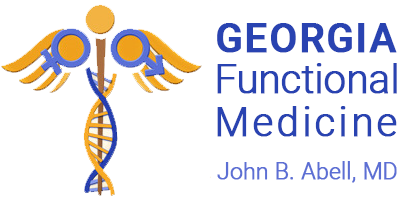I, as well as many other physicians, remember in 2002 when the Women’s Health Initiative trial came to an abrupt end because of the increased risk of invasive breast cancer. The telephones at physicians’ offices started ringing and patients all over the country stopped taking their hormone replacement therapy. This was several years before I knew anything about bio-identical hormone replacement therapy. Estrogen was named as the culprit at the time. However, after review of the data, it became clear that synthetic progestins were the primary cause of the increased risk of breast cancer. This is not to say that synthetic progestins are the only cause; however, addition of synthetic progestins, specifically Medroxy Progesterone Acetate, when added to estrogen therapy, significantly increased breast cancer risk.
According to several studies, Bio-identical Progesterone:
- Inhibits estrogen–stimulated breast epithelial cells
- Induces breast cancer cell apoptosis (cell death)
- Diminishes breast cell mitotic activity (cell growth) and
- Helps arrest human breast cancer cells early in their growth phase.
In contrast, synthetic progestins increase breast cell proliferation and therefore the risk of breast cancer.
The Women’s Health Initiative looked at 16,608 women who had an intact uterus while the French E3N Cohort study looked at 80,377 women. The French study looked at several different treatment protocols including estrogen alone or in combination with synthetic progestins or bio-identical progesterone. While there was a slight increase in the risk of breast cancer with estrogen alone therapy, the study showed essentially the identical results in patient’s receiving synthetic progestins as did the American study. Interestingly, the study showed no increase in the risk of breast cancer in women taking estrogen plus bio-identical progesterone.
Now, this does not mean that estrogen is not a risk factor for breast cancer. We will get into this issue and other conversations. There has been a significant amount of research into estrogen’s risk for breast cancer. Most of the experts at this time feel that it is the metabolites or breakdown products of estrogen that increase one’s risk of breast cancer. There are as well, multiple other risk factors for breast cancer which we will discuss at some point in time as well. Many of these are environmental or, what we “bathe our cells in”.
Unfortunately, many women stopped hormone replacement therapy or never started HRT, because of the fear of side effects.
But what about the beneficial effects of hormone replacement therapy? The North American Menopause Society recently updated their consensus statement regarding hormone replacement therapy. As per their global consensus statement from Climacteric, 2013, menopausal hormone therapy (MHT) is the most effective treatment for vasomotor symptoms associated with menopause at any age, but benefits are more likely to outweigh the risks for symptomatic women before the age of 60 years or within 10 years of menopause. MHT is effective and appropriate for the prevention of osteoporosis–related fractures in at-risk women before the age of 60 years or within 10 years of menopause. MHT may decrease coronary artery disease and all–cause mortality in women younger than 60 years of age and within 10 years of menopause. The option of MHT is an individual decision in terms of quality of life and health priorities as well as personal risk factors such as age, time since menopause, and the risk of venous thromboembolism (blood clots), stroke, ischemic heart disease and breast cancer. The increased risk of breast cancer is primarily associated with the addition of a progestogen (synthetic progestin) to estrogen therapy and related to the duration of use. The risk of breast cancer attributable to MHT is small and the risk decreases after treatment is stopped. The use of custom–compounded bioidentical hormone therapy is not recommended. I take issue with this last statement and will expound upon this later.
There is a lot of good data supporting the use of bio-identical hormone replacement therapy. One of my passions is to relate this to women who are very afraid of treatment and suffer unnecessarily. I was reminded of this as I sat at the doctor’s station writing on a chart the other day and overheard a nursing assistant bemoaning her symptoms of anxiety, hot flashes, insomnia (among others), but noted that she was afraid to take hormone replacement therapy because of the potential consequences. Many women are afraid of a safe, medically helpful treatment for their symptoms because of so much mis-information that they hear in the media, that their friends warn them of (who are mis-informed as well), and, unfortunately, what they have heard from their physicians who may not be aware of the literature surrounding bio-identical hormone replacement therapy.
Before I close, I should briefly mention some of the beneficial effects of hormone replacement therapy that will be expounded upon in further articles. Estrogen is protective of the woman’s heart. Heart disease in women is much lower than in men but catches up after menopause. Osteoporosis is more prevalent in women. Hormone replacement therapy has been shown to be beneficial for bone health, and the beneficial effects of hormone replacement therapy on bones begin to drop off within 6 months of stopping hormone replacement. Estrogen is protective of the brain; dementia is more common in women than in men, and per Pamela Smith M.D. Estrogen = Memory. Pamela is the director of the fellowship program for Anti-Aging and Regenerative Medicine that I have completed. Estrogen is protective for a woman’s eyes. In Pamela Smiths words “Estrogen equals Vision, Mobility and Memory”.
John B. Abell M.D.
